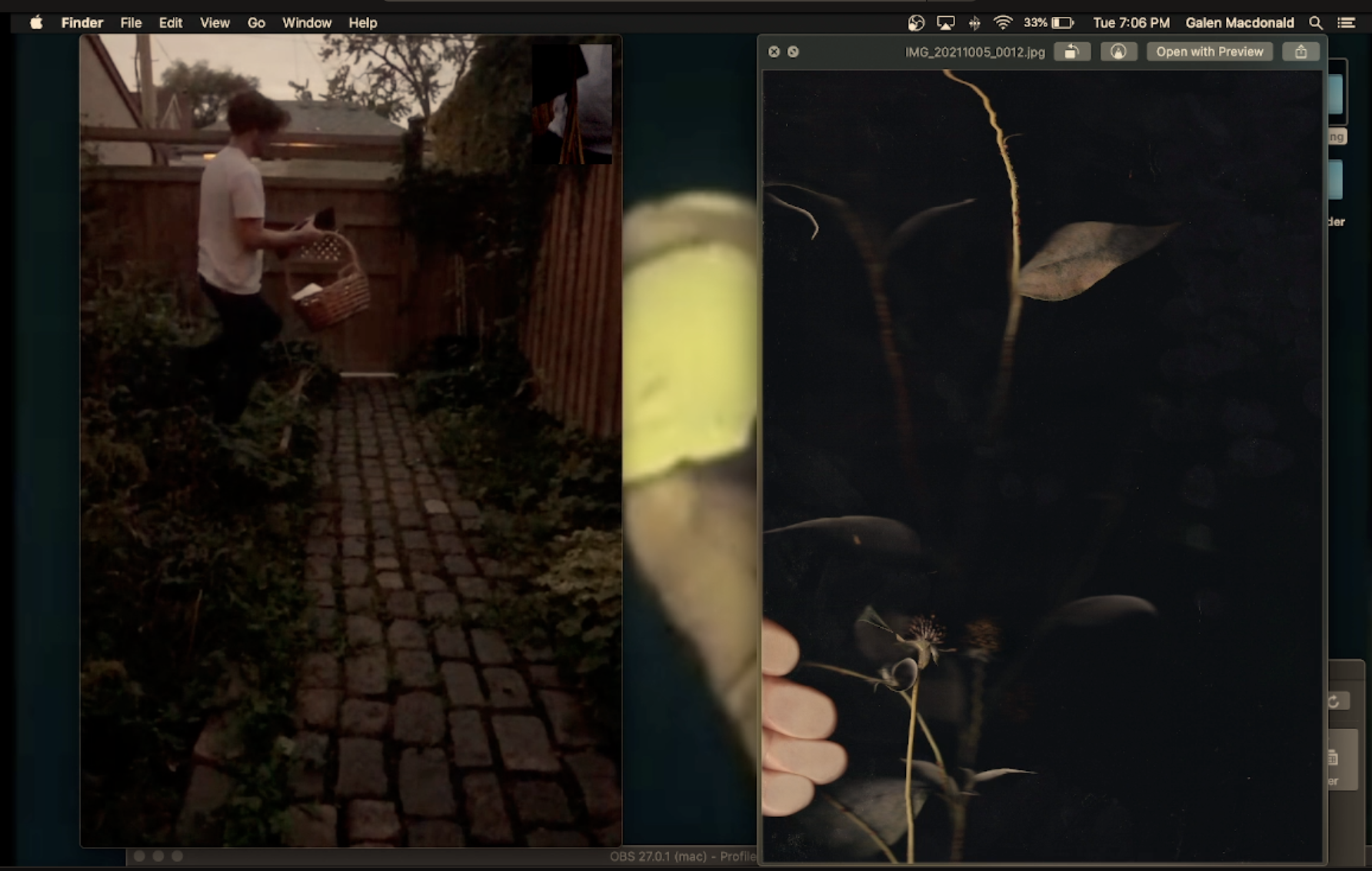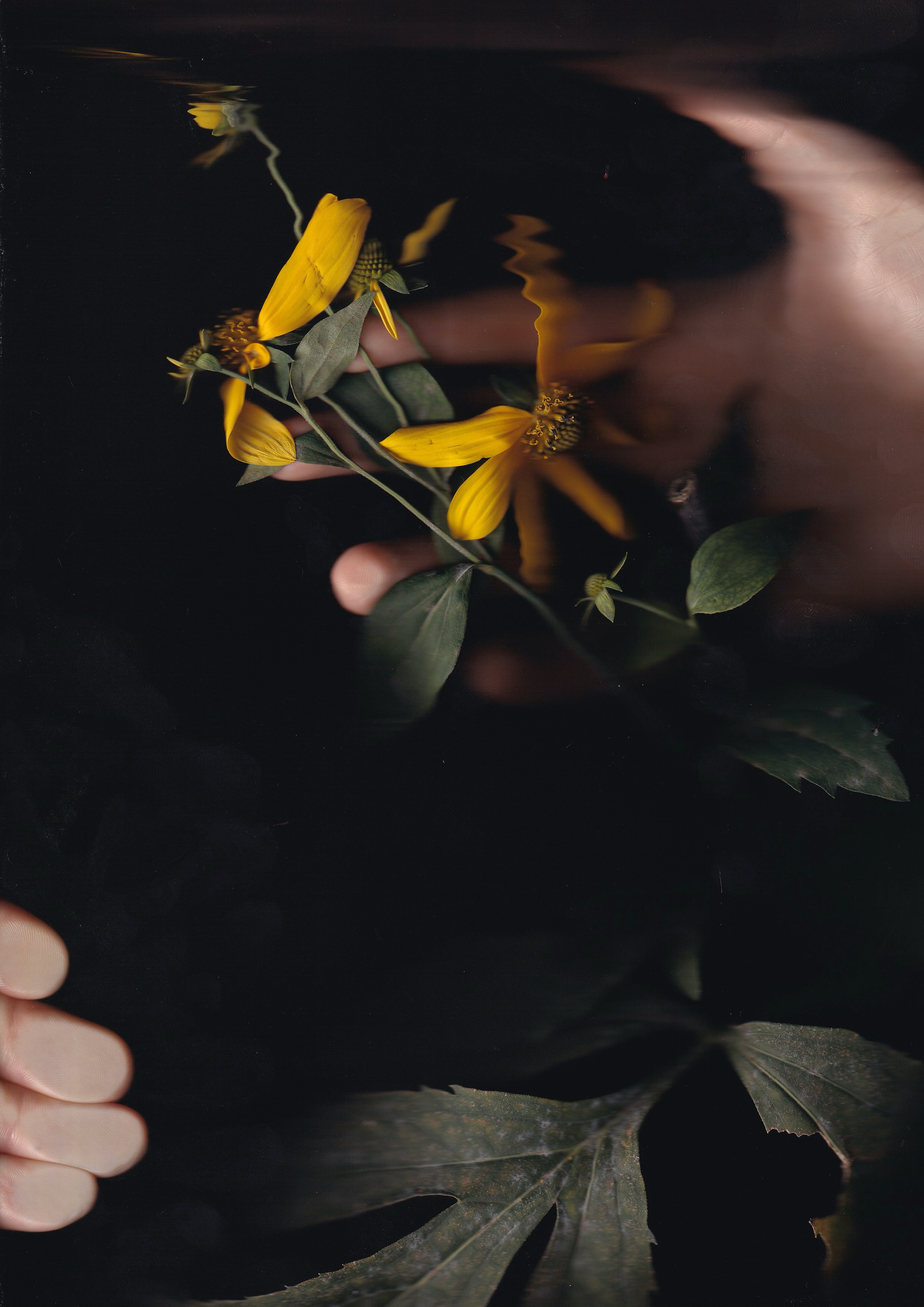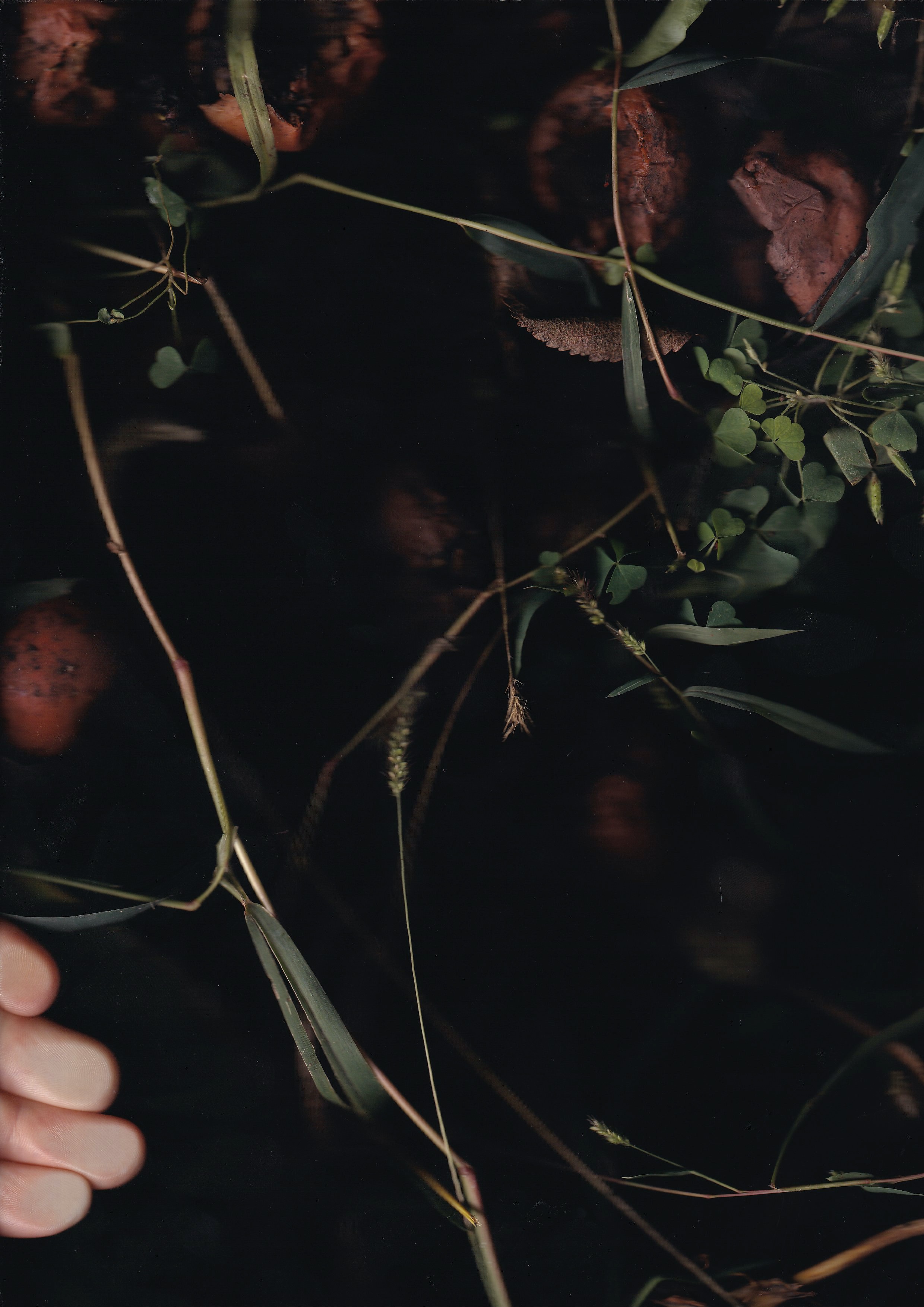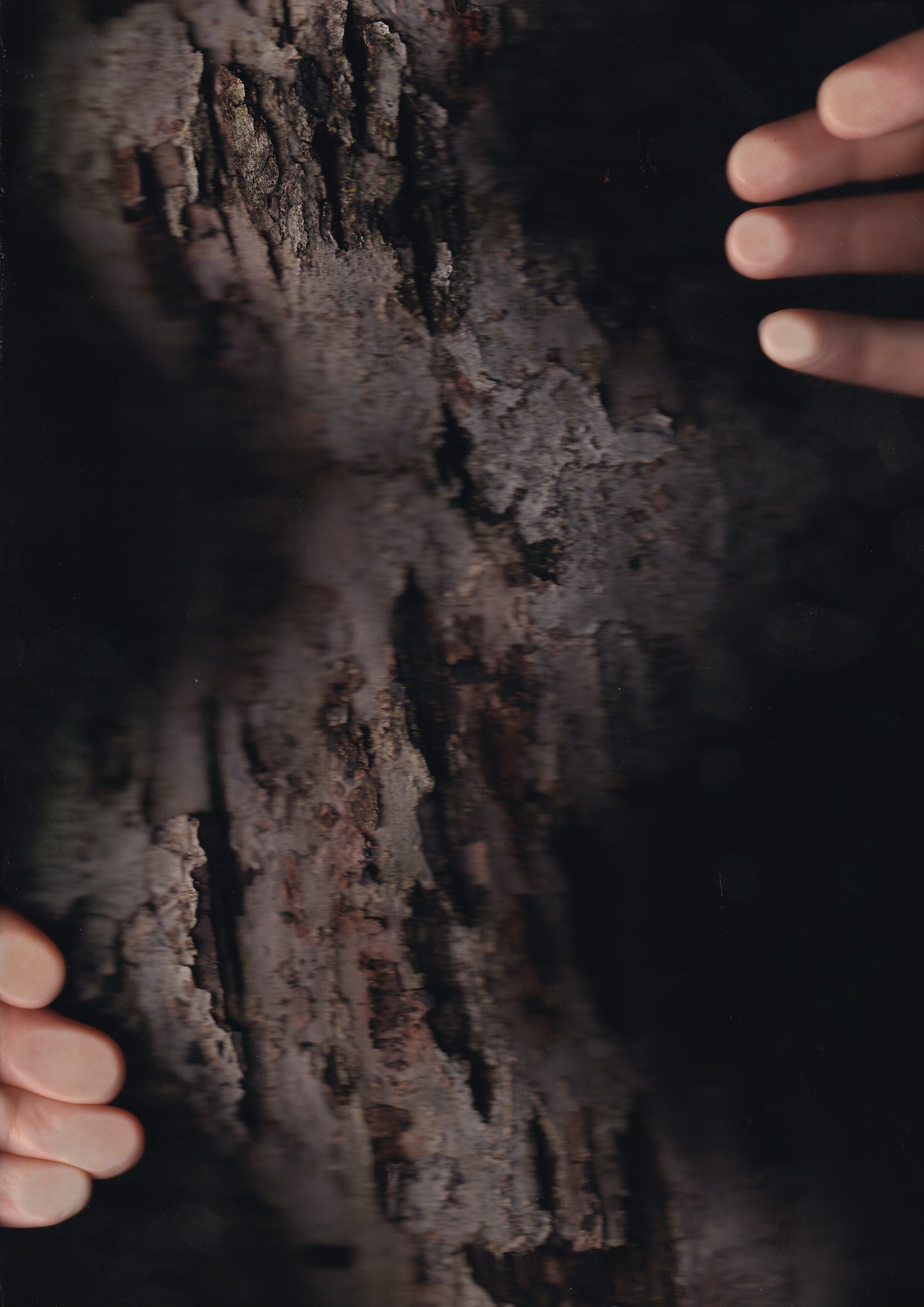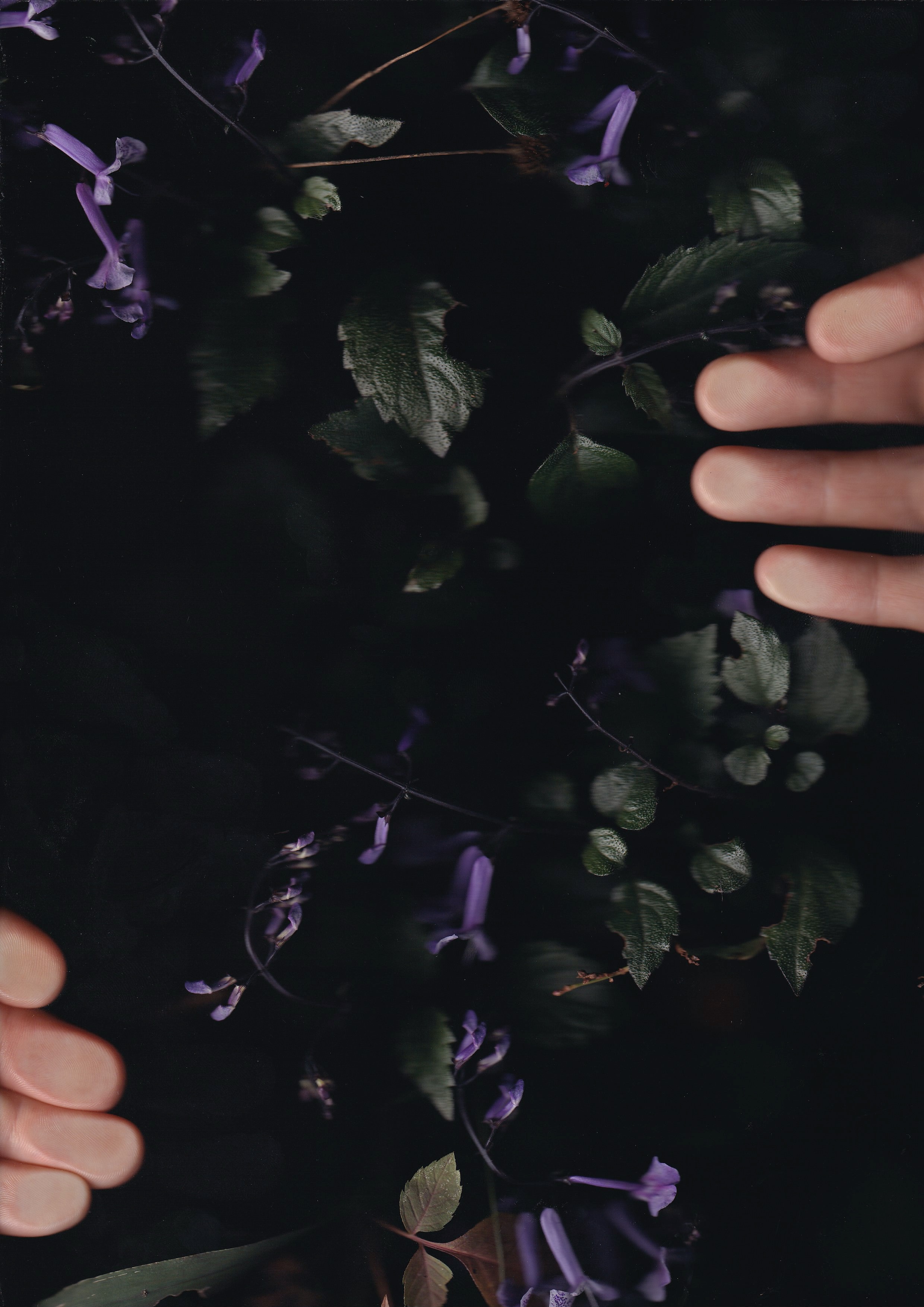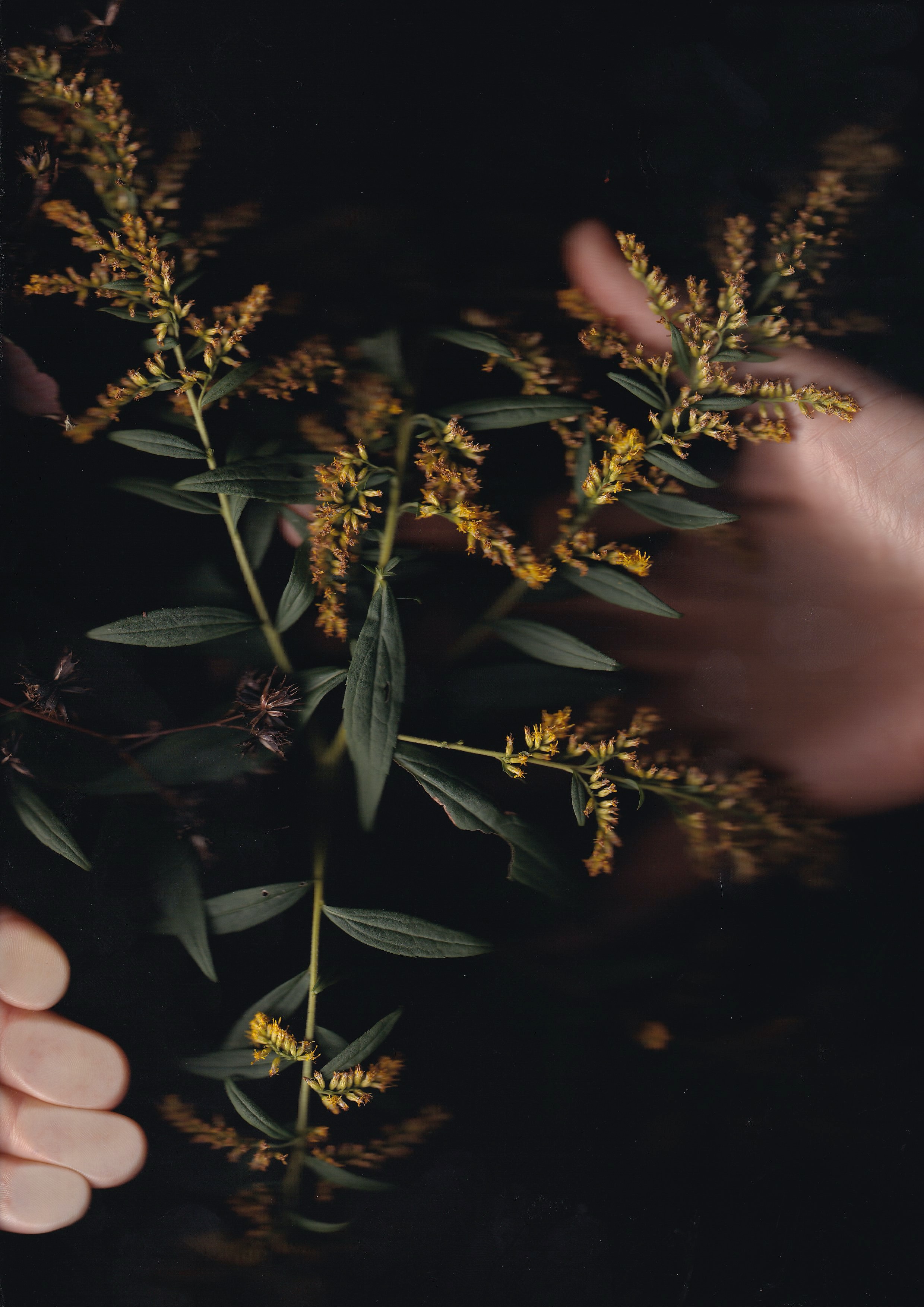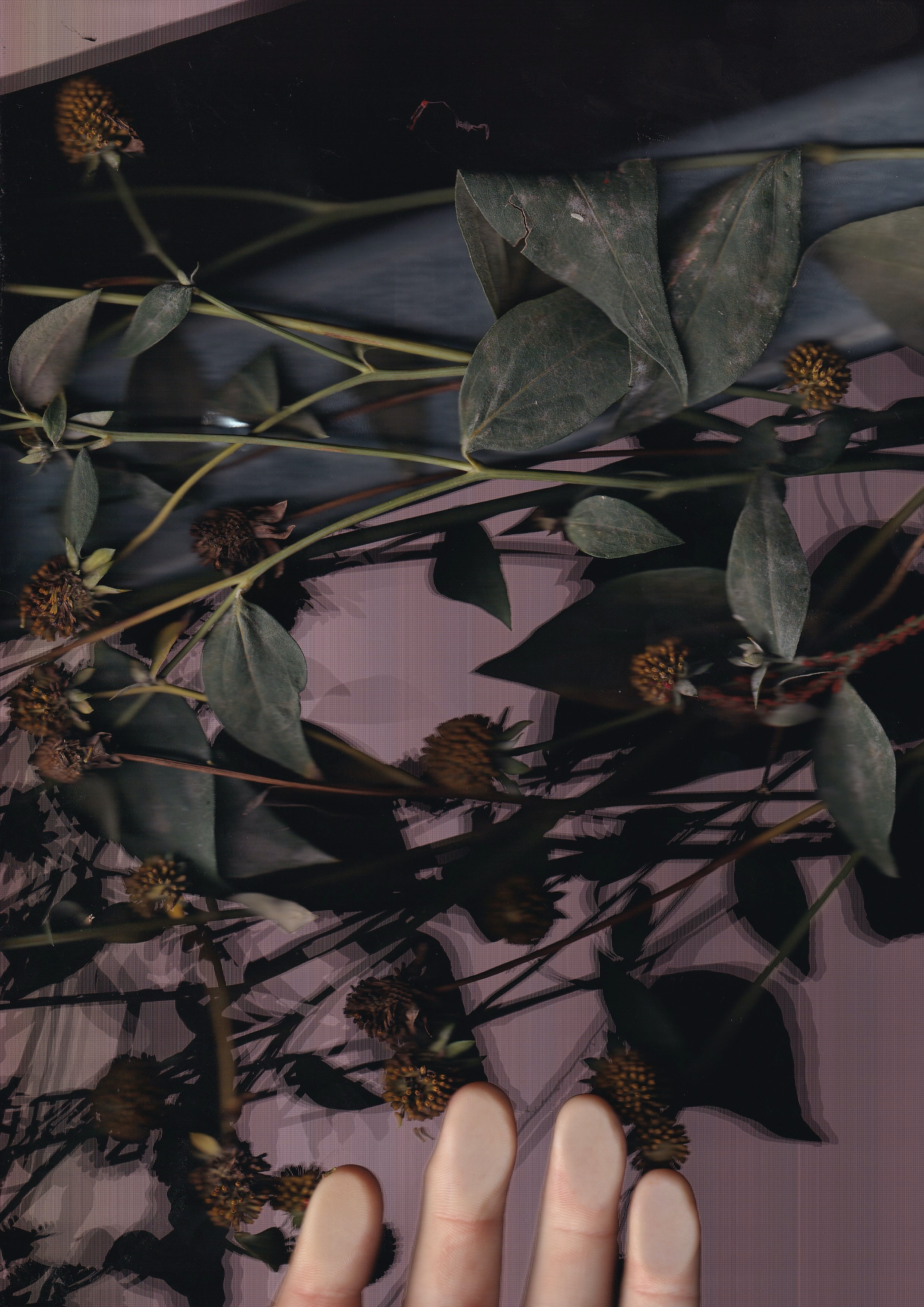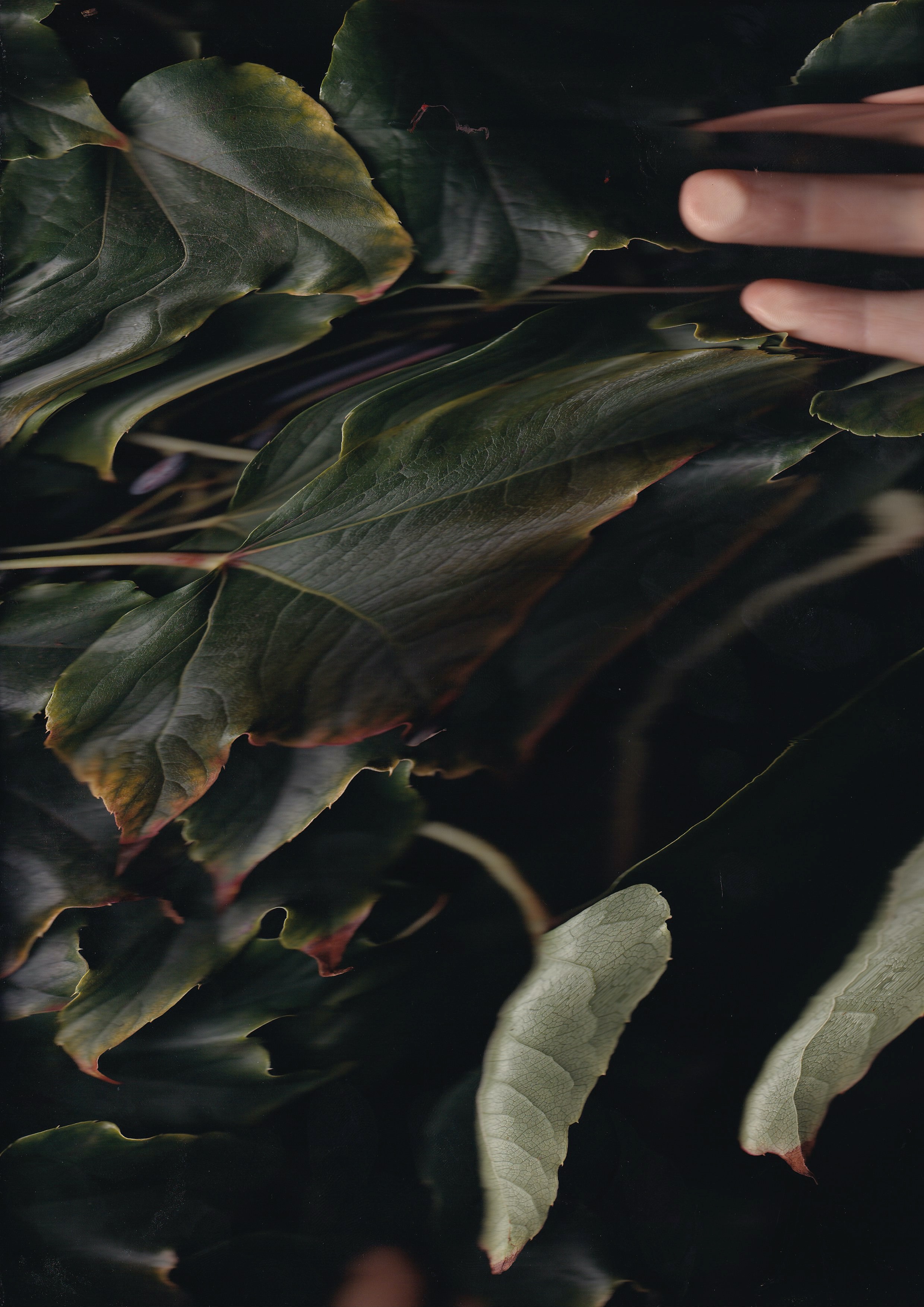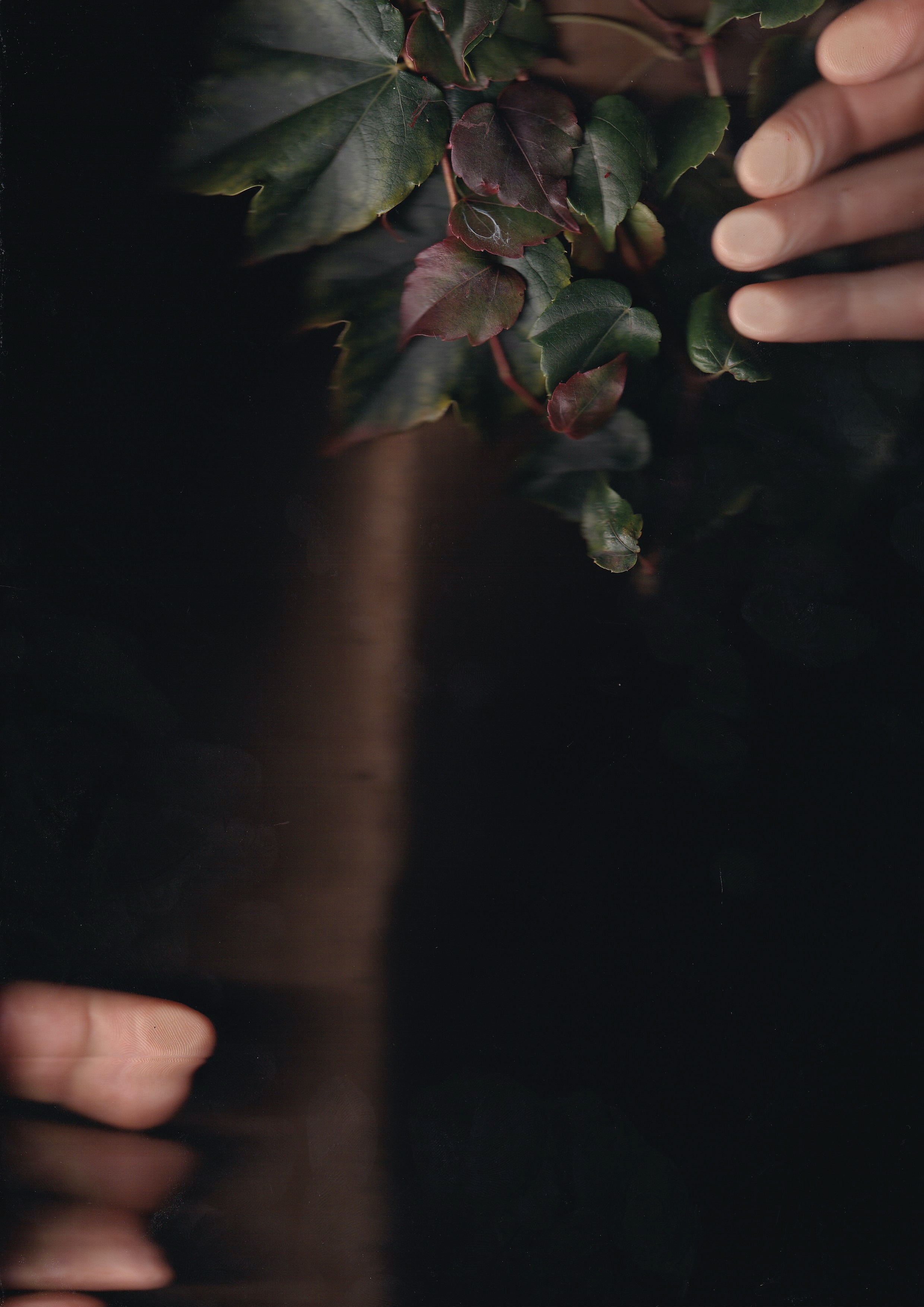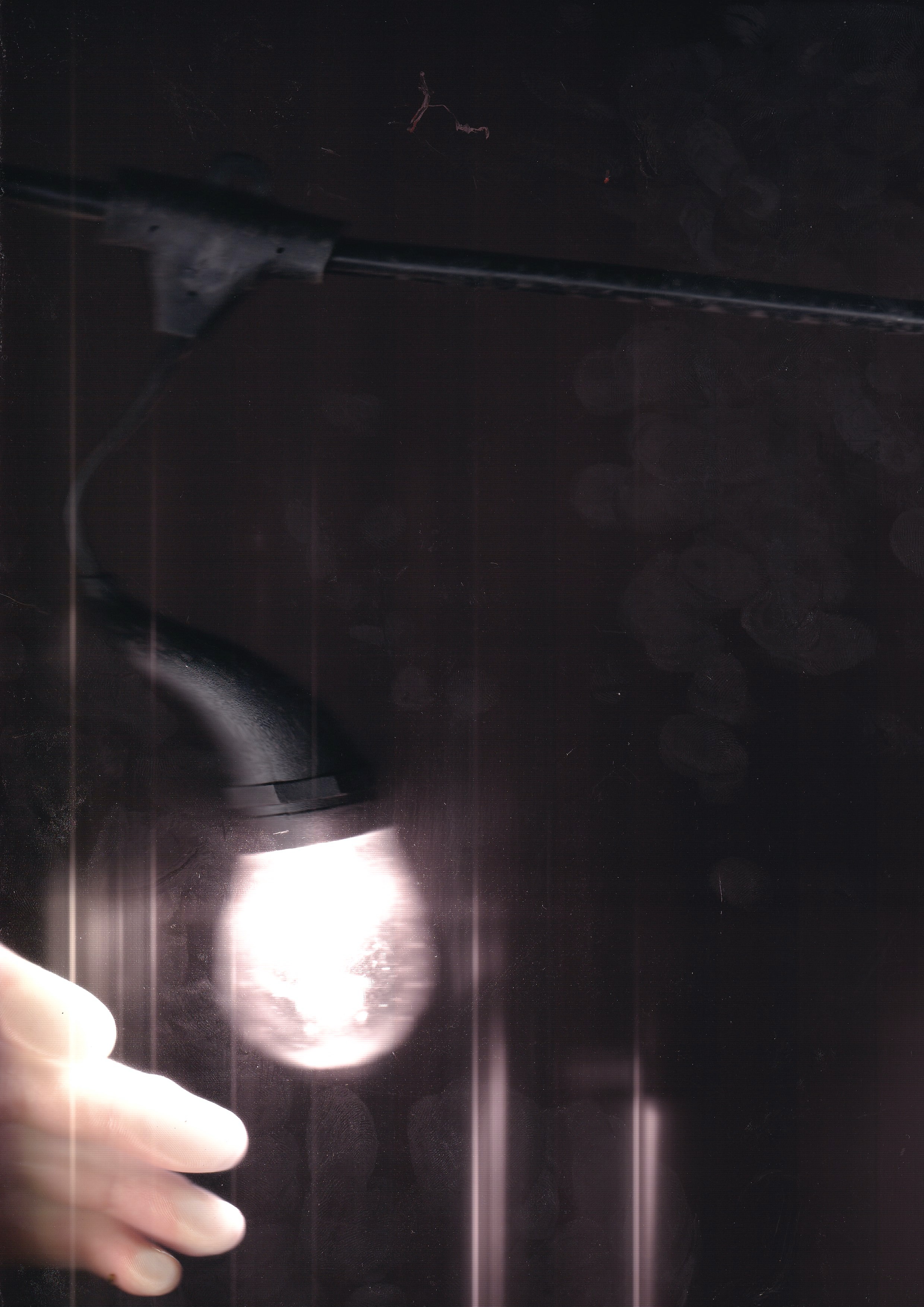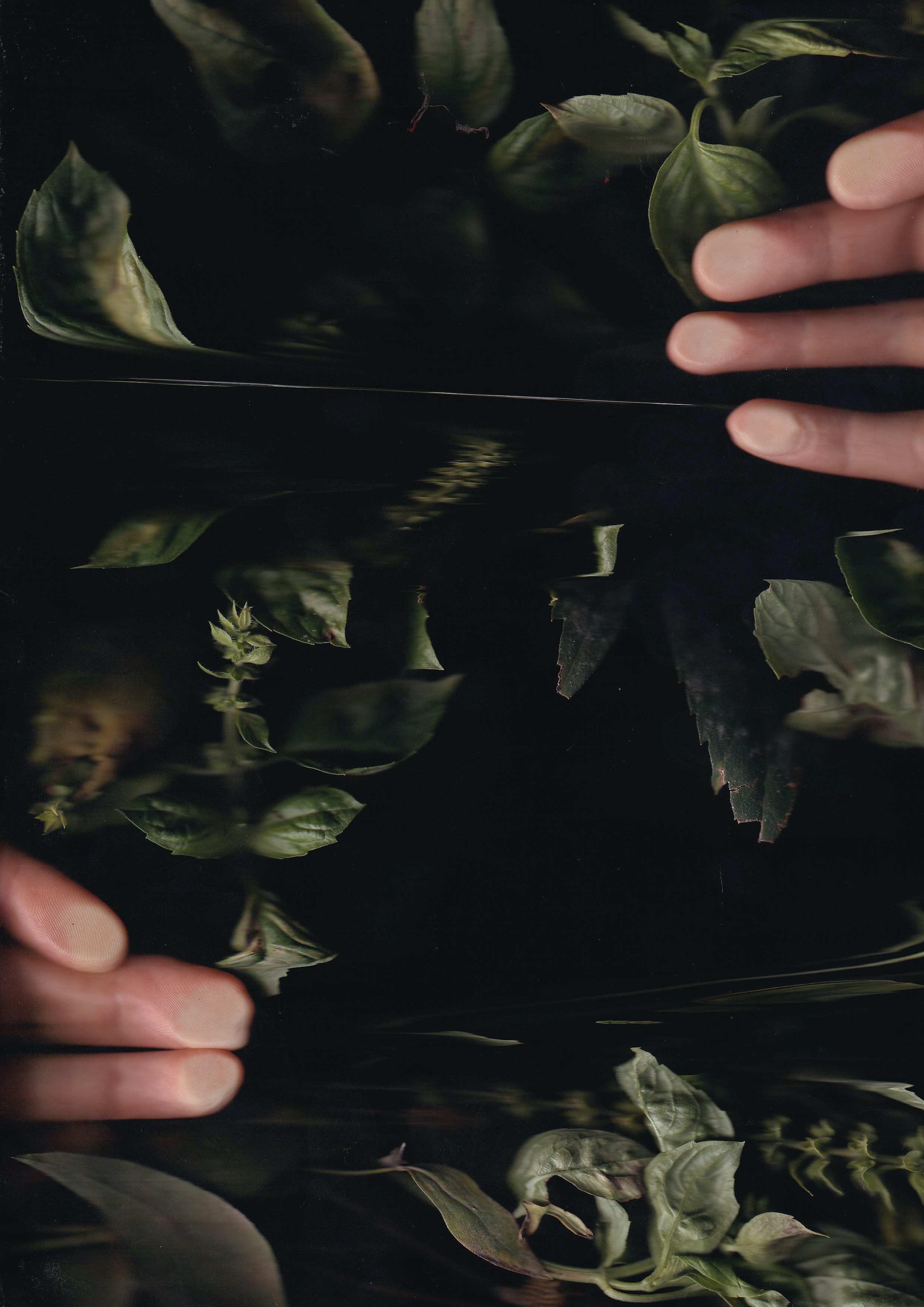Please click here to play / pause the accompanying audio.
My work for Roundtable manifested as a live-streamed performance on October 5, from my backyard. With my laptop in a wicker basket and a usb-powered document scanner, I read this text while capturing the images you see below. These images were taken in civil twilight -- for full effect I encourage you to look at them in civil twilight wherever you are.
Click on any of the below images to download them.
* * * * * * * * * * * *
* * * * * * * * * * * *
There is a way to solve a maze by touch. It can’t hurt to remember this, just in case: put out one arm and touch the nearest wall. Now, move forward, keeping contact with that wall, and you will eventually find an exit. My backyard is a simple maze, like this: a single volume, one wall leading from entrance to exit.
If you were thinking — wow, that backyard is a mess — would you believe it’s this way on purpose? It’s not. I was away from home in July and August and I’ve used this performance as an excuse not to put it in order. Let me know if that’s a good excuse in the comments.
No, this isn’t an intentional project . It’s absence, procrastination, and confusion. The whole backyard is strewn with apples, and the story with each apple is the same: A squirrel takes a single bite of it, and throws it on the ground. then a group of hornets hollow it out into a hot wet husk, stinking in its rancid transition to alcohol. I tried one, once, before the squirrels and hornets got to it. Disgusting.
* * * * * * * * * * * * * * * *
* * * * * * * * * * * * * * * *
In March and April 2020 I got really obsessed with watching YouTube videos about orchards, and permaculture. This apple tree flowered in the spring, — well, exactly half of it did. One trunk was covered in white flowers, and the other had none. I showed my friend Benny, who loves apples and he said, oh, maybe its grafted! So I looked that up. It turns out that if you like the apples that grow on a certain tree, you cut a branch off that tree and then splice it onto the cut branch of a new, other tree— and you get the exact same apples.
It’s a nice dream to grow your own food and make your own soil. I found out the soil in my backyard is very clay heavy, and also that my home is almost directly over Garrison Creek, which was buried into a culvert. There is a raised bed here that I planted pole beans and cucumbers and greens and herbs in, and it’s grown over. I love this crashing wave of sunflowers, which I could say are volunteers, which is when something grows without you putting it there, but you like it.
* * * * * * * * * * * * * * * *
* * * * * * * * * * * * * * * *
As I’ve learned to find more contact with friends remotely this year, I have forgotten how to touch people. hellos and goodbyes have their stumbles, accidentally stepping on a foot leaning for a hug— but the times in between are the hardest. I forget how to go arm in arm. It’s an uncomfortable feeling to be so intangible in the direct presence of my friends.
I forgot how to touch the Earth before I was born. I learned how to bury my hands in soil, even how to leave a seed. I learned how to accept the cold breathlessness of a winter swim. But still I have a constant feeling that nature is elsewhere, outside, untouched.
* * * * * * * * * * * * * * * *
* * * * * * * * * * * * * * * *
There is this whole cultural lineage in white American and Canadian culture about monumental, god’s glory nature, untouched by humankind. It runs through Henry David Thoreau and Ralph Waldo Emerson, it runs through John Muir, and Ansel Adams, and I recognize these myths, with their delights, and their horrors, in me. Ansel Adams took stunning, majestic photographs at Yosemite National Park and in the High Sierra, carefully and intentionally omitting the presence of the indigenous people who lived in those places. The artist Cezar Mocan talks about the ways these myths show up on our Desktops: Apple’s operating systems read as a direct homage to Ansel Adams. Yosemite, El Capitan, High Sierra, all places that Adams helped define in the myth of the Untouched West. What a direct and horrific connection for Apple to make, as high technology companies continue to dispossess and destroy indigenous land for materials — copper and lithium from Chile, Tin from Indonesia, Cobalt from Southern Congo, rare earth minerals from Inner Mongolia. Ansel Adams wrote in a letter to fellow photographer Dorothea Lange: “I am not afraid of beauty”.
* * * * * * * * * * * * * * * *
* * * * * * * * * * * * * * * *
Two stories of the American ornithologist John James Audobon, who is famous for his life-size paintings of hundreds of varieties of birds: The first story is that he shot and killed the birds he painted, and then took them back to his studio to arrange them. In fact, he shot birds pretty indiscriminately, and then sorted out which ones were worth painting later. The second story is that in 1812 rats ate his entire collection of more than 200 drawings, and he almost gave up painting entirely. I wonder if he would have given up shooting birds.
I like the scanner because it is sight as a sense of touch. A high-fidelity near-proximity, a needing to have, a having to know. An embodiment of soft focus. Bringing the scanner to the world is trying to need to love, trying to know to fear. I’m trying to fill this basket of logic and network with distortion, blur, darkness, and artifact — to fill it with bugs. To fill it with something akin to leaves, something akin to metal, something akin to soil. To fill it with something akin to friends.
* * * * * * * * * * * * * * * *
* * * * * * * * * * * * * * * *
There is a way to solve a maze by touch. It can’t hurt to remember this, just in case.
Please click here to play / pause the accompanying audio.
My work for Roundtable manifested as a live-streamed performance on October 5, from my backyard. With my laptop in a wicker basket and a usb-powered document scanner, I read this text while capturing the images you see below. These images were taken in civil twilight -- for full effect I encourage you to look at them in civil twilight wherever you are.
Click on any of the below images to download them.
* * * * * * * * * * * * * * * *
* * * * * * * * * * * * * * * *
There is a way to solve a maze by touch. It can’t hurt to remember this, just in case: put out one arm and touch the nearest wall. Now, move forward, keeping contact with that wall, and you will eventually find an exit. My backyard is a simple maze, like this: a single volume, one wall leading from entrance to exit.
If you were thinking — wow, that backyard is a mess — would you believe it’s this way on purpose? It’s not. I was away from home in July and August and I’ve used this performance as an excuse not to put it in order. Let me know if that’s a good excuse in the comments.
No, this isn’t an intentional project . It’s absence, procrastination, and confusion. The whole backyard is strewn with apples, and the story with each apple is the same: A squirrel takes a single bite of it, and throws it on the ground. then a group of hornets hollow it out into a hot wet husk, stinking in its rancid transition to alcohol. I tried one, once, before the squirrels and hornets got to it. Disgusting.
* * * * * * * * * * * * * *
* * * * * * * * * * * * * *
* * * * * * * * * * * * * *
In March and April 2020 I got really obsessed with watching YouTube videos about orchards, and permaculture. This apple tree flowered in the spring, — well, exactly half of it did. One trunk was covered in white flowers, and the other had none. I showed my friend Benny, who loves apples and he said, oh, maybe its grafted! So I looked that up. It turns out that if you like the apples that grow on a certain tree, you cut a branch off that tree and then splice it onto the cut branch of a new, other tree— and you get the exact same apples.
It’s a nice dream to grow your own food and make your own soil. I found out the soil in my backyard is very clay heavy, and also that my home is almost directly over Garrison Creek, which was buried into a culvert. There is a raised bed here that I planted pole beans and cucumbers and greens and herbs in, and it’s grown over. I love this crashing wave of sunflowers, which I could say are volunteers, which is when something grows without you putting it there, but you like it.
* * * * * * * * * * * * * *
* * * * * * * * * * * * * *
* * * * * * * * * * * * * *
As I’ve learned to find more contact with friends remotely this year, I have forgotten how to touch people. hellos and goodbyes have their stumbles, accidentally stepping on a foot leaning for a hug— but the times in between are the hardest. I forget how to go arm in arm. It’s an uncomfortable feeling to be so intangible in the direct presence of my friends.
I forgot how to touch the Earth before I was born. I learned how to bury my hands in soil, even how to leave a seed. I learned how to accept the cold breathlessness of a winter swim. But still I have a constant feeling that nature is elsewhere, outside, untouched.
* * * * * * * * * * * * * *
* * * * * * * * * * * * * *
* * * * * * * * * * * * * *
There is this whole cultural lineage in white American and Canadian culture about monumental, god’s glory nature, untouched by humankind. It runs through Henry David Thoreau and Ralph Waldo Emerson, it runs through John Muir, and Ansel Adams, and I recognize these myths, with their delights, and their horrors, in me. Ansel Adams took stunning, majestic photographs at Yosemite National Park and in the High Sierra, carefully and intentionally omitting the presence of the indigenous people who lived in those places. The artist Cezar Mocan talks about the ways these myths show up on our Desktops: Apple’s operating systems read as a direct homage to Ansel Adams. Yosemite, El Capitan, High Sierra, all places that Adams helped define in the myth of the Untouched West. What a direct and horrific connection for Apple to make, as high technology companies continue to dispossess and destroy indigenous land for materials — copper and lithium from Chile, Tin from Indonesia, Cobalt from Southern Congo, rare earth minerals from Inner Mongolia. Ansel Adams wrote in a letter to fellow photographer Dorothea Lange: “I am not afraid of beauty”.
* * * * * * * * * * * * * *
* * * * * * * * * * * * * *
* * * * * * * * * * * * * *
Two stories of the American ornithologist John James Audobon, who is famous for his life-size paintings of hundreds of varieties of birds: The first story is that he shot and killed the birds he painted, and then took them back to his studio to arrange them. In fact, he shot birds pretty indiscriminately, and then sorted out which ones were worth painting later. The second story is that in 1812 rats ate his entire collection of more than 200 drawings, and he almost gave up painting entirely. I wonder if he would have given up shooting birds.
I like the scanner because it is sight as a sense of touch. A high-fidelity near-proximity, a needing to have, a having to know. An embodiment of soft focus. Bringing the scanner to the world is trying to need to love, trying to know to fear. I’m trying to fill this basket of logic and network with distortion, blur, darkness, and artifact — to fill it with bugs. To fill it with something akin to leaves, something akin to metal, something akin to soil. To fill it with something akin to friends.
* * * * * * * * * * * * * *
* * * * * * * * * * * * * *
* * * * * * * * * * * * * *
There is a way to solve a maze by touch. It can’t hurt to remember this, just in case.
